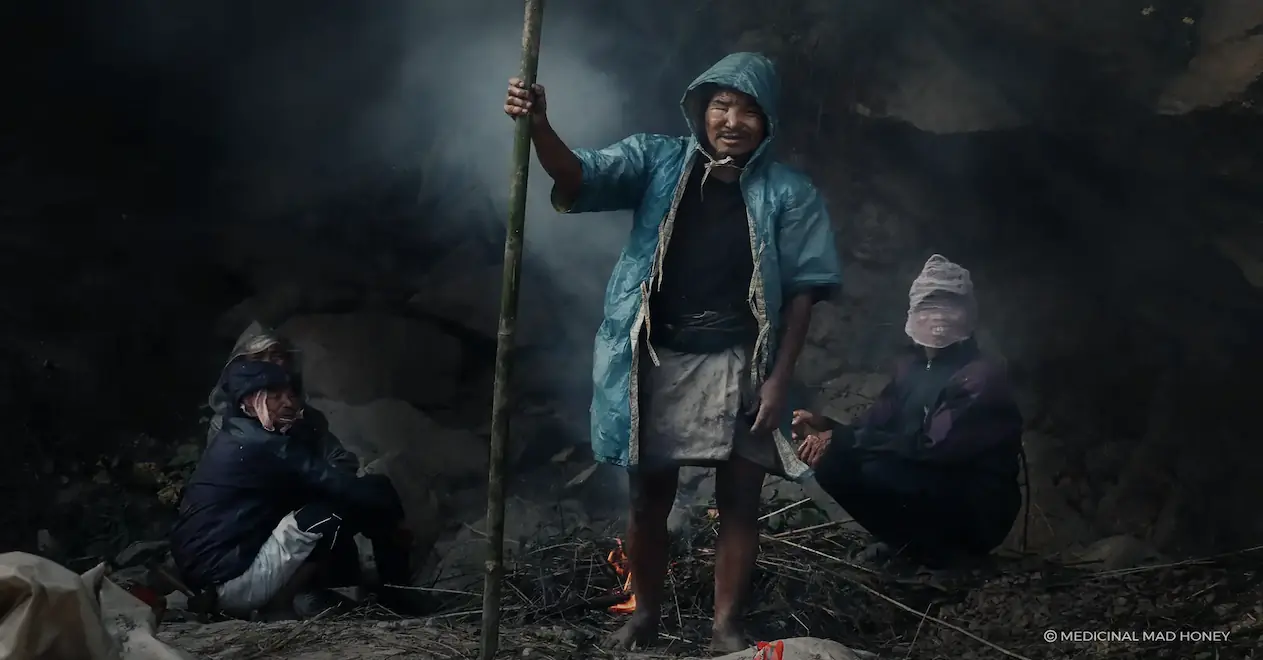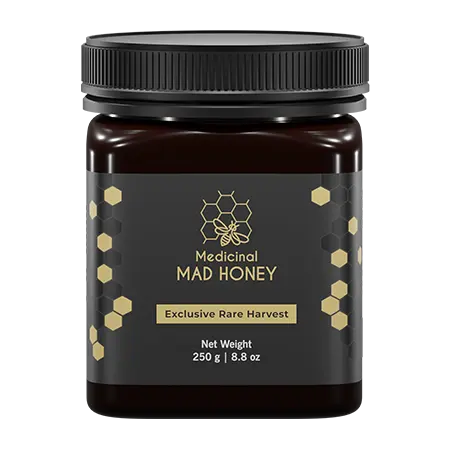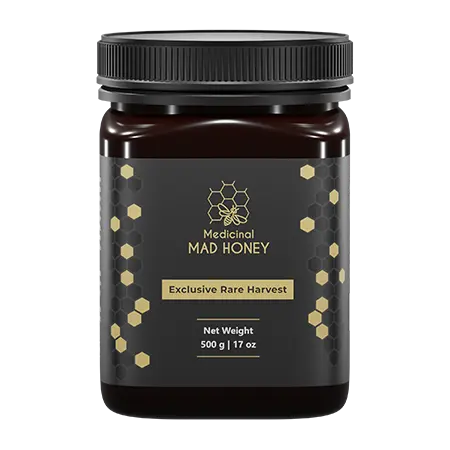
The brave, mad honey hunters make it seem easy and doable! But unfortunately, this is not the case! Mad honey hunting is a challenging and delicate job that only the Gurung honey hunters seem to be cracking.
Mad Honey hunting communities are the real heroes when it comes to preserving and passing down the skills.
They have a profound connection to and familiarity with the landscapes where the rhododendron flowers grow. Hence, you can witness glimpses of honor and pride in their practises.
These communities provide valuable insights into the sustainable harvesting of honey and the importance of balancing cultural traditions with conservation efforts.
The Origin of Mad Honey Hunting
You can trace the origins of Mad Honey harvesting back hundreds, if not thousands, of years. Many Historical records show that several cultures have a long history of collecting and using honey, dating as far back as ancient Greece.
In those ancient civilizations, Mad Honey served various purposes, including medicinal, religious, and even recreational uses. For thousands of years, the Gurung have been consuming mad honey for their vital health.
They would use mad honey as a potent mood booster that would calm them and also give them a boost of energy.
The Gurungs: Daredevil Honey Hunters
The Gurung reside in the Lamjung district of Nepal. Originally, they came from Tibet and were known as the lionhearted tribe in Nepal. Most of them are farmers and rely on growing vegetables and rice. They live like recluses, with little to no contact with the outside world.
However, the times are changing now! Due to Mad Honey’s high-profile fame, they are getting the long-due recognition they deserve. Now they are slowly realizing the potential that the mad honey holds.
Honey Hunting Season
The mad honey harvesting season holds great significance for the Gurung community and is filled with both excitement and caution. This period typically unfolds during Nepal’s spring and autumn months, when the massive Himalayan honeybees (known as Apis dorsata laboriosa) swarm the cliffs and rocky crevices in the Himalayan foothills.
Timing is crucial because it aligns with the season when these bees gather nectar from rhododendron flowers, which infuses the honey with its unique psychoactive qualities. Throughout this season, Gurung honey hunters pay meticulous attention to nature’s cues and the bees’ behaviour. The timing of the harvest is kept secret among honey hunting groups, drawing upon generations of wisdom and experience to pinpoint the ideal moment.
Anticipation and enthusiasm mount as they gear up for their expedition, recognising that the mad honey they collect will not only provide sustenance but also hold a vital place in their cultural traditions.
Steps of Mad Honey Hunting
The Gurung take great risks to collect the honey. They hunt with no protective gear and mere flimsy hunting gear.
The steps involved in collecting Mad Honey are as follows:
Preparing Equipment
Harvesters prepare the necessary equipment before they set out on their hunt. The equipment includes long bamboo or wooden ladders, ropes, and baskets. Also, to calm the brutal giant honeybees, they take smoking materials like dried leaves.
Finding a Hive
Honeybee hives can be found in various locations, including cliff faces, tree hollows, and rocky outcrops. The honey hunters check these areas carefully for signs of hive entrances, such as bees coming and going and the presence of beeswax and honeycomb.
Use Smokers
Giant honeybees are highly defensive of their nests. When they perceive a threat to their hive, they respond aggressively to protect it.
Giant honeybees swarm in large numbers to defend their nest. This means that if the honey hunters disturb a hive, they will face hundreds or even thousands of angry bees.
When they feel threatened, they will not hesitate to sting intruders repeatedly. For some honey hunters, these stings can cause severe allergic reactions.
Hence, they smoke the dried leaves to distract the honey bees while they fulfil their quest for honey. They approach the hive slowly and quietly to avoid agitating the bees.
Harvest the Honey
With caution, they cut out sections of the honeycomb using a scraper or knife. They handle the cutting gently to avoid damaging the bees or the hive. Be gentle to avoid damaging the bees or the hive.
Honey-hunting is teamwork! Once the smoke blankets the cliff, diverting the attention of the honeybees, one hunter gently tips the nest using a bamboo stick.
Simultaneously, another hunter stands ready with a lowered wooden basket, poised to collect the precious Himalayan red honey as it slowly drips from the exposed honeycomb.
Hope For The Future
There remains a topic of debate within the honey hunting community, as some honey hunters aspire for their children or grandchildren to receive an education.
In contrast, others are staunch advocates of honey hunting, fearing the influence of Westernisation on their offspring.
Regrettably, young Gurungs often miss out on higher education opportunities due to their poor economic circumstances. Even though they receive primary education, the schools are far away and poorly organised.
Consequently, these young individuals lack the motivation to pursue a career in honey hunting, believing it may not offer them substantial prospects. This lack of interest is understandable. Mad honey, despite its unique qualities, has not received the recognition it deserves.
The potential of mad honey remains largely unexplored and underappreciated, leaving it disconnected from the culture it stems from. Unfortunately, many are unaware of the significance of mad honey and the economic opportunities it could generate.
However, there are whispers circulating about honey hunting and honey hunters, indicating a gradual shift in awareness.
Although numerous tourists visit honey hunting areas for sightseeing and expeditions, the timing of their visits during unfavourable seasons often disrupts honey harvesting activities.
In the current scenario, a considerable number of Nepalese youths are compelled to seek employment abroad due to limited opportunities at home, and young Gurungs appear to be following this trend.
It is undeniable that these young individuals often earn meagre incomes abroad, lacking significant skills and higher education, and leaving behind their cultural treasure of mad honey.





